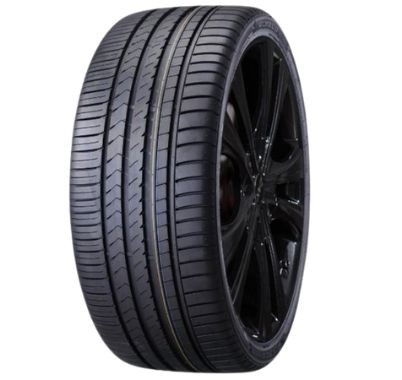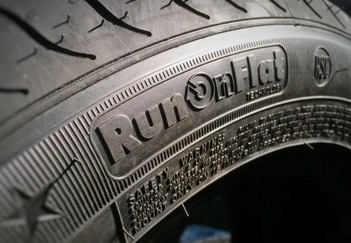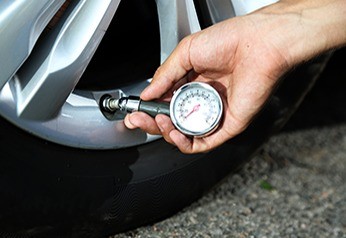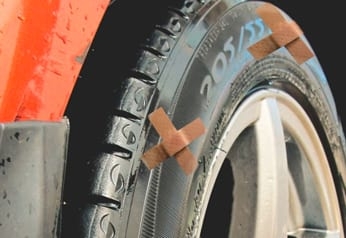
December 08, 2022
Your Essential Guide to Run-Flat Tyres
Tyres do more than move your vehicle; they also carry loads, give you a comfortable ride, and guarantee your safety with their braking and grip performance.
They are your vehicle's first line of defence because they battle with road imperfections, debris and temperature changes.
It's no wonder then that flat tyres are an inevitable part of a driver's life. But the good news is that manufacturers have thought of a way to remedy this by developing run-flat tyres.

What are Run-Flat Tyres?
Run Flat Tyres are reinforced tyres that let them bear your vehicle’s weight for a limited time when they’re punctured. With runflats, you don't have to change your flat tyre right away. What's more, you don't have to change the tyres yourself. You can leave this task in the able hands of a mechanic since with a punctured runflat, you can drive for about 80 kilometres more at a maximum speed of 80 kilometres per hour. This gives you enough time to get to the nearest shop and change your flat tyre.
Check your vehicle manual to learn the recommended speed and distance limits when using your punctured run-flat tyre.
To avoid these uncomfortable flat tyre changing scenarios, tyre innovators throughout the decades designed Run Flat Tyres.
Run-Flat Acronyms on Your Tyre Sidewall
Depending on their brand, run-flat tyres are usually marked with the following codes on their sidewalls:
Bridgestone- RFT (Run-Flat Tyre)
Continental- SSF (Self-Supporting Tyre)
Dunlop- DSST (Dunlop Self-Supporting Tyre)
Goodyear- EMT (Extended Mobility Technology)
Michelin- ZP (Zero Pressure)
Pirelli- Run Flat
What Causes Flat Tyres?
The most common cause of flat tyres is getting punctured by a sharp object—which makes you pull over to the roadside and either call for assistance or change your tyre.
But what's more dangerous is when the puncture happens at high speeds, leading to a total loss of control and an accident. Other causes of flat tyres are:
- A damaged valve stem, which is a small tube made of rubber or metal that protrudes from your tyre. You place the pump head on the valve stem to inflate tyres.
- Difficult road conditions
- Heat
- Wear and tear
- Improper tyre inflation


How Can You Drive on a Punctured Run-Flat Tyre?
Driving on a punctured tyre for an extended period sounds almost impossible, bordering on sorcery. Because if a tyre loses air, how can it retain its shape? We all know that tyres can carry loads because of their air pressure. Sure, a rigid carcass construction helps, but when air leaks, a tyre is nothing but sagging rubber. Run-flat technology remedies this in three ways:
1. Self-Supporting
As mentioned, tyres can bear weight because of their air pressure. But the self-supporting run-flat tyre can roll even without air, thanks to its reinforced build.
Rubber inserts and other tough materials fortify the sidewalls so that the cords won't break with air loss. Customised beads also ensure that the tyre stays attached to the wheel.
However, you need to install a Tyre Pressure Monitoring System (TPMS) because this run-flat type does its job so well that you won't be able to tell that you’re running flat. The TPMS lights up on your dashboard display to warn you about a lowered tyre pressure.
2. Self-Sealing Ability
This run-flat type is constructed like a standard tyre, except that it has an inner lining of puncture sealant. When sharp objects such as nails or screws cause a puncture, the sealant is released, filling the hole as soon as you pull out the foreign object.
Because it's built like a standard tyre, you don't need TPMS before mounting a self-sealing tyre. When air pressure is low, you'll still feel the symptoms of a deflated tyre, such as loss of steering control and vibrations.
3. Supplementary Support
In this case, the responsibility to keep your runflat going rests on not the tyre but on the wheel. A support ring attached to the wheel holds up the punctured tread and helps it roll on the road. This system puts pressure on the sturdier wheel, which, unlike tyres, don't often need replacement.
It also gives you better ride comfort than rigid self-supporting tyres. But the downside to using this technology is that you can't switch to standard tyres because of the specific wheel design.

What Are the Pros and Cons of Using Run-Flat Tyres?
The most obvious benefit is you don't have to engage in the risky business of changing flat tyres beside speeding traffic. Here are the other pros of driving on runflats:
• The flexibility to choose where you can replace your tyre
• Peace of mind, knowing that your tyres can handle emergencies
• Boosted ride safety
• More space in your hood because you don't have to lug around a spare and tools
However, runflats also have these limitations:
• You can only drive on a damaged run-flat tyre temporarily. You will still need to change the damaged tyre.
• Take note of the limited speed and distance for run-flat tyres. It's dangerous to drive on them too fast, too far, or with excessive loads.
• Some run-flat tyres require your vehicle to be equipped with TPMS.
• They are pricier and not recommended for repair.
• Handling may be compromised when you're driving on a punctured run-flat tyre. So, avoid quick turns and heavy braking and acceleration.
How Do You Fit Run-Flat Tyres?
Changing a runflat requires the use of machines. This process can be done using the following:
• Automatic rim-clamp tyre changer
• Rollers
• Side-shovels
When using side shovels, a technician manually places the wheel and tyre in position, rotates, and flips them.
The technician should place the roller or side shovel on the sidewall near the bead or wheel flange without touching it.
Positioning the roller or side shovel too near or too far from the bead may damage the sidewall. These steps follow:
• Loosening the rear-end bead by applying tyre lubricant to facilitate its smooth removal.
• If using a side-shovel loosener, the technician manually rotates the tyre and wheel to loosen the rear-end bead. The process is repeated around the tire's front to loosen the outside bead.
• Before fitting the new tyre, the technician equips the TPMS sensors with a new rubber seal, valve core and retaining nut. Using the old components may cause air to leak.
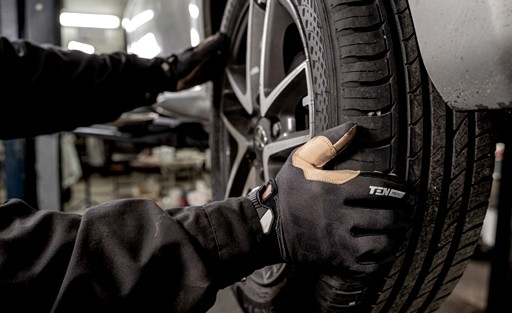
Can I Replace Run-Flat Tyres With Regular Tyres?
Can I Repair Run-Flat Tyres?
Another downside to using runflats is that experts don’t recommend repairing them when they have been used with low or zero air pressure. Why? Because there's no way to tell if the tyre has sustained internal damage. Hidden structures such as cords, steel belts, and plies may have been broken or stretched. When this happens, the tyre weakens, making it unsafe to use.
Here are some manufacturer recommendations for run-flat repair:
| Allows 1 repair maximum | Allows repair if 15 psi is maintained | Allows 1 repair maximum for speed ratings of H- & above | Repair is not recommended |
|---|---|---|---|
| ✅BFGoodrich ✅Michelin |
✅Bridgestone | ✅Dunlop ✅Goodyear |
✅Continental ✅Yokohama ✅Pirelli |
Tyroola's 5 Fun FAQs About Runflats
1. Are run-flat tyres worth it?
Run-flats can be considered safer, especially during a flat tyre scenario. However, even if they sound like the perfect choice, there are still some trade-offs and disadvantages in using them, just like with any other tyre. The best option will depend on your particular needs and driving conditions.
2. How long do run-flat tyres last?
If you maintain your tyres through correct inflation and regular balancing, rotation and alignment, undamaged runflats should last for about 50,000 to 60,000 kilometres.
3. Can I install both standard and run-flat tyres on my car?
No, we don't recommend you mix different tyre types on one vehicle since they have specific characteristics that might not match.
4. Are runflats fuel-efficient?
Because you don't need to carry the extra weight of a spare tyre and tools, your vehicle load becomes lighter, which boosts fuel economy. This happens because you ease the pressure off your tyres, helping them roll easier, consume less fuel, and produce fewer emissions.
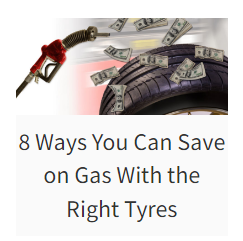
5. How much do runflats cost?
Because of their convenience and safety features, run-flat tyres usually cost 25% to 30% more than standard tyres.
Tyroola's Run-Flat Recos
Buy Run-Flat Tyres Online & Fit Locally.
Driving on run-flat tyres is as convenient as buying them on Tyroola. Just enter your rego or tyre size to compare brands and prices. Take advantage of our flexible payment plans to purchase your new tyres, which we'll deliver to a fitting centre near you. Want to save more? Check out our monthly promos for the sweetest tyre deals.
For more tyre tips and tricks, visit our blog and guides.


